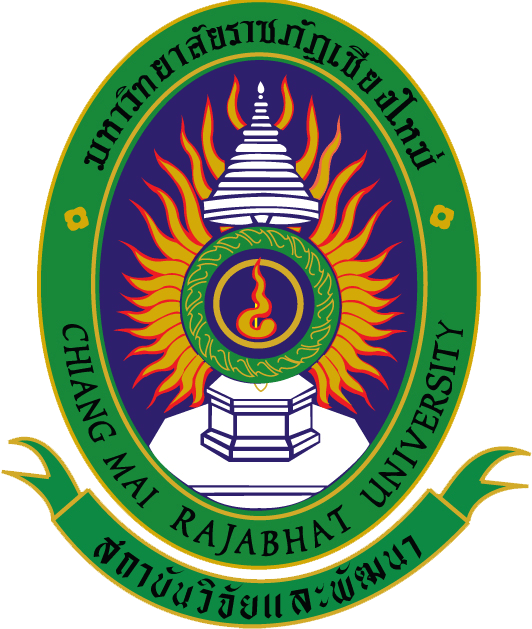
ระบบสารสนเทศงานวิจัย สถาบันวิจัยและพัฒนา มหาวิทยาลัยราชภัฏเชียงใหม่
Research Information System(RIS)
การพัฒนาชุมชนเกษตรจังหวัดเชียงใหม่ สู่การท่องเที่ยวระดับอาเซียน ปีที่ 3
รองศาสตราจารย์ ดร.ภัทรวุฒิ สมยานะ
คณะวิทยาการจัดการ
คำสำคัญ :
เลขทะเบียน :
1080-62-MGT-NRCT
บทคัดย่อ
การวิจัยมีวัตถุประสงค์เพื่อศึกษาและหาแนวทางการพัฒนาศักยภาพของชุมชนเกษตร จังหวัดเชียงใหม่สู่การท่องเที่ยวระดับอาเซียน อาศัยการวิจัยเชิงคุณภาพในการวิเคราะห์บริบทชุมชน ตัวอย่าง 5 ชุมชน ได้แก่ 1) ชุมชนท่องเที่ยวเชิงเกษตรต าบลห้วยทราย อ าเภอแม่ริม 2) ชุมชน ท่องเที่ยวเชิงเกษตรดอยปู่หมื่น ต าบลบ้านหลวง อ าเภอแม่ริม 3) ชุมชนท่องเที่ยวเชิงเกษตรแม่โจ้ บ้านดิน ต าบลบ้านเป้า อ าเภอแม่แตง (4) ชุมชนท่องเที่ยวเชิงเกษตรปงอินรักษ์ฟาร์มสเตย์ ต าบล บ้านปง อ าเภอหางดง และ (5) ชุมชนท่องเที่ยวเชิงเกษตรบ้านสวนกลางดอย ชุมชนปงไคร้ ต าบล โป่งแยง อ าเภอแม่ริม เครื่องมือที่ใช้ คือ การวิเคราะห์ SWOT เพื่อให้ทราบปัจจัยที่ส่งเสริมและไม่ ส่งเสริมศักยภาพของกลุ่ม และการวิเคราะห์เชิงปริมาณเพื่อหาแนวทางการพัฒนากลุ่มสู่การ ท่องเที่ยวระดับอาเซียนร่วมกับแบบประเมินการท่องเที่ยวเชิงเกษตรตามแนวทางของเศรษฐกิจ พอเพียง 5 มิติ ผลการวิจัยพบว่า ชุมชนการท่องเที่ยวเชิงเกษตรจังหวัดเชียงใหม่ มีศักยภาพเฉลี่ยในระดับดี โดยมีศักยภาพมากที่สุดในด้านการรองรับของแหล่งท่องเที่ยวเชิงเกษตร และด้านการให้บริการของ แหล่งท่องเที่ยวเชิงเกษตร รองลงมาคือ ด้านการบริหารจัดการ และด้านการสร้างแรงดึงดูดใจของ แหล่งท่องเที่ยวเชิงเกษตร ส่วนด้านที่ต้องปรับปรุงอย่างเร่งด่วน คือ ด้านการจัดการตลาด ซึ่งต้องเร่ง ด าเนินการในด้านนี้โดยการบูรณาการแบบองค์รวม โดยเอากลยุทธ์การสร้างเครือข่ายการท่องเที่ยว มาสนับสนุนให้ภาคการเกษตรของจังหวัดเชียงใหม่สามารถยกระดับการแข่งขันในระดับประเทศ ได้มากขึ้น
Abstract
The research aims to study and seek to develop the potential of the agricultural community in Chiang Mai to ASEAN tourism. Qualitative research was conducted to analyze the context of five communities as follows; 1) agro-tourism community of Huaisai sub-district, Mae-Rim district 2) agro-tourism community of Doi Pumeuan, Baan Luang sub-district, Mae-Rim district 3) agro-tourism community of Maejo Baandin Bann Pao sub-district, Mae-Teang district 4) agrotourism community of Ponginrat FarmStay Baan Pong sub-district, agro-tourism community of Hang-Dong district, and 5) agro-tourism community of Baansuanklangdoi Pong Khai community Pongyeang sub-district, Mae-Rim district. SWOT analysis was a tool used to determine the factors that promoted and not-promoted those groups. Quantitative analysis was employed to find ways to develop the groups to ASEAN tourism with the agro-tourism assessment according to the five-dimensional sufficiency economy approach. The results showed that the tourism community in Chiang Mai has an average potential in good level with the most potential in the support and service of agro-tourism. The second most potential is the management and the creation of an agro-tourism attraction. The need for urgent improvement is the market management, which requires urgent action on this issue by holistic integration. Building a travel network strategy could be supporting the agricultural sector of Chiang Mai to further enhance the country’s competitive level
ไฟล์งานวิจัย
2. AEC 8 กิตติกรรมประกาศ 62.pdf
ข้อมูลการตีพิมพ์
ชื่อบทความ :
แหล่งที่ตีพิมพ์ :Journal of Modern Management Science 13(2) (2020) pp.29
ปีที่ตีพิมพ์ :2563
185 18 ธ.ค. 2561
สำนักงานคณะกรรมการวิจัยแห่งชาติ (วช.)
196 Paholyotin Rd., Chatuchak, Bangkok 10900
0-2561-2445